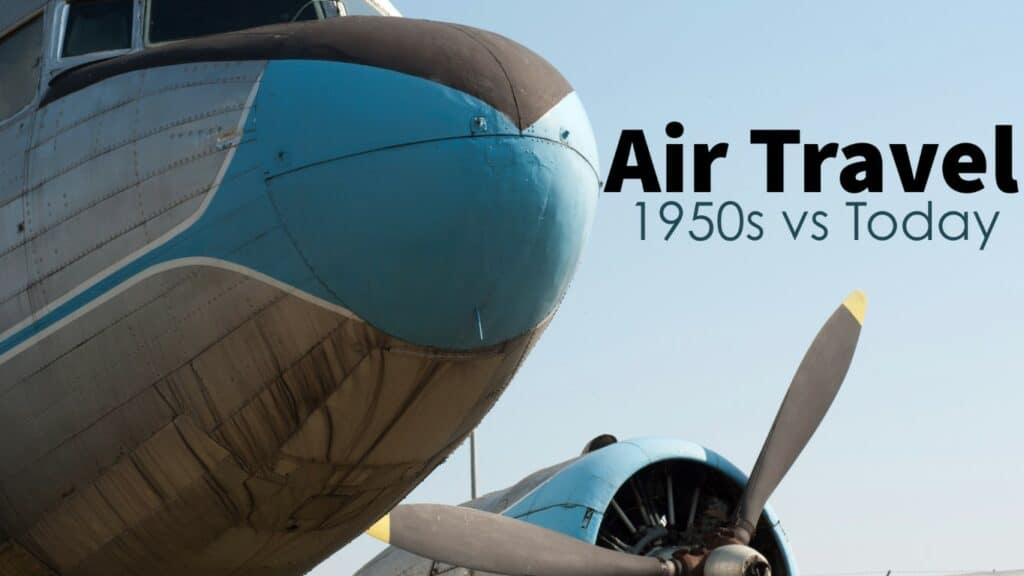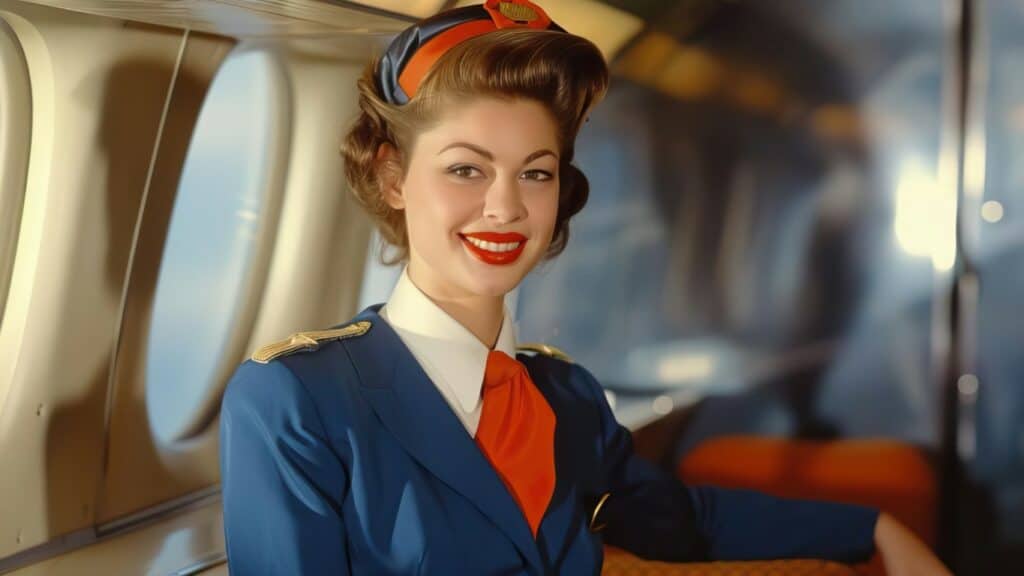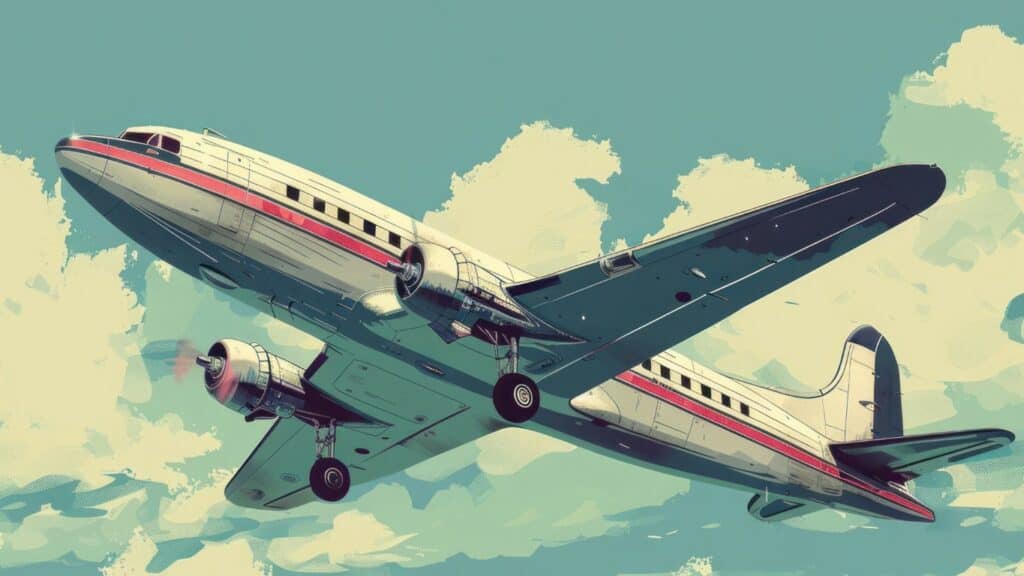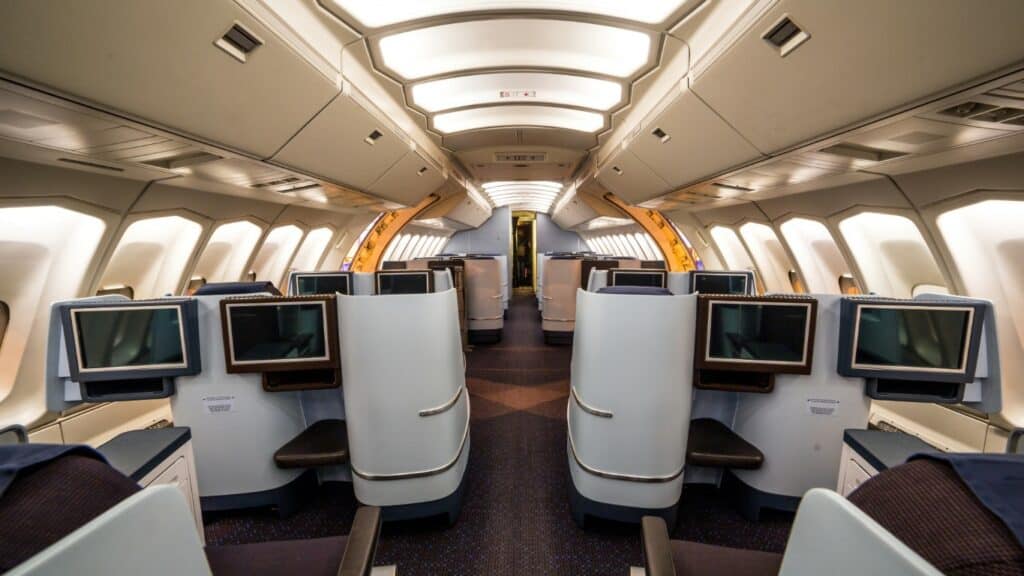Flying internationally in the 1950s was an entirely different experience compared to today’s air travel. Let’s dive into the fascinating evolution of air travel, comparing the charm and challenges of the 1950s to the convenience and efficiency we enjoy today.
The Golden Age of Air Travel: The 1950s
In the 1950s, air travel was glamorous, exclusive, and quite an event. Let’s explore what it was like to fly internationally during this golden era.
Visa Requirements
The evolution of air travel has also been accompanied by changes in visa requirements and access to various countries.
Visa Requirements in the 1950s
In the 1950s, crossing international borders often required navigating a complex web of visa regulations. Many countries had strict entry requirements, and obtaining a visa was sometimes a lengthy process. Travelers frequently needed to provide documentation such as proof of financial means, return tickets, and sometimes even letters of invitation from hosts in the destination country. Furthermore, certain countries were more restrictive, making travel difficult for individuals from specific nations.
Modern Visa Requirements
Visa requirements today can differ greatly based on the traveler’s nationality and destination. While many countries still necessitate visas, an increasing number have introduced visa waiver programs that let travelers from specific nations visit without a visa for short stays. The process has become easier with online applications and e-visas, helping travelers obtain the necessary documentation with less hassle. In some situations, entry can be granted upon arrival, further enhancing the travel experience.
For those needing assistance, iVisa is a helpful resource that simplifies the process of obtaining visas for various countries.
Access to Different Countries
In the 1950s, access to various countries was often limited by political relations and international agreements. Some regions were more isolated due to conflicts or diplomatic tensions, restricting travel opportunities for many individuals.
Today, globalization and improved diplomatic relations have opened up many more destinations to international travelers. Airlines have expanded their networks, providing direct flights to previously inaccessible locations. Additionally, advancements in technology have made it easier for travelers to research and understand entry requirements for different countries.
Aircraft and Comfort
Airplanes in the 1950s:
Propeller-driven aircraft like the Douglas DC-6 and Lockheed Constellation dominated the skies.
Seats were spacious, with ample legroom.
Cabins featured luxurious décor, often resembling a hotel lobby.
Modern Aircraft:
Today, jet engines power most planes, such as the Boeing 787 Dreamliner and Airbus A350.
Economy class seats are more compact, but business and first-class options provide exceptional comfort.
In-flight entertainment systems and Wi-Fi are standard.
In-Flight Service and Dining
Service in the 1950s:
Flying internationally meant receiving silver service meals on fine china.
Air hostesses, dressed in elegant uniforms, provided personalized attention.
Meals were multi-course, often featuring gourmet dishes.
Service Today:
In-flight service varies greatly depending on the airline and class.
Economy class meals are simpler, while premium cabins offer gourmet options.
Self-service snack bars and digital ordering systems enhance convenience.
The Journey: Then and Now
The journey itself has transformed significantly, impacting travel time, comfort, and overall experience.
Flight Duration
1950s Travel Time:
Flying internationally took much longer due to propeller-driven aircraft and frequent stops. For example, a flight from New York to London could take up to 18 hours with stopovers.
Modern Travel Time:
Jet engines and non-stop routes have drastically reduced travel time. The same New York to London route now takes approximately 7 hours non-stop.
Ticketing and Check-In
Ticketing in the 1950s:
Paper tickets were the norm, often requiring visits to travel agencies or airline offices.
Check-in was a manual process, leading to longer wait times.
Modern Ticketing:
Digital tickets and online check-in streamline the process.
Self-service kiosks and mobile apps further expedite boarding.
Safety and Technology
Advancements in technology have made air travel safer and more efficient. Safety regulations in the 50s were less stringent. Cabin pressurization was still a relatively new concept. Emergency procedures were basic. Now, however there are rigorous safety protocols and advanced technology ensure passenger safety. Features like turbulence detection and enhanced navigation systems are standard. Extensive crew training and regular safety audits are mandatory.
Costs and Accessibility
Air travel has become more accessible and affordable over the decades.
1950s Ticket Prices:
Flying internationally was expensive, often reserved for the wealthy or business travelers.
A round-trip ticket from New York to London could cost around $400, equivalent to several thousand dollars today.
Modern Ticket Prices:
Competitive pricing and low-cost carriers have made air travel more affordable.
Frequent flyer programs and travel deals further reduce costs.
Accessibility
Limited flight routes and fewer airlines made planning a trip more challenging in the 50s. Airports were fewer, often requiring long journeys to reach them.
Meanwhile, now there are a vast network of airlines and routes connects nearly every corner of the globe. Major airports are more accessible, with improved infrastructure and transportation links.
The Experience: Nostalgia vs. Modern Convenience
Flying internationally in the 1950s was an experience filled with nostalgia, charm, and exclusivity. Today, it’s about efficiency, technology, and widespread accessibility.
Nostalgic Charm of the 1950s
Atmosphere:
Air travel felt like a special occasion.
Passengers dressed in their finest attire.
The experience was often compared to a luxury cruise.
Modern Convenience:
Casual dress is acceptable, making travel more comfortable.
The focus is on speed and efficiency, from booking to landing.
The overall experience is more democratic, allowing more people to travel.
Lounges and Boarding
1950s Lounges:
Airport lounges were exclusive and luxurious, often reserved for first-class passengers.
Personalized service and comfort were paramount.
Modern Lounges:
Airport lounges cater to a wider range of passengers through loyalty programs. Amenities include showers, gourmet dining, and business facilities.
Environmental Impact
There was much less awareness of environmental concerns. Just like cars in the 1950s, aircrafts were less fuel-efficient. Now airlines focus on reducing carbon footprints. Advanced engines and sustainable aviation fuel are becoming standard.
Summary
The evolution of air travel from the 1950s to today highlights significant advancements in comfort, safety, accessibility, and technology. Flying internationally in the 1950s was a glamorous affair, while today’s air travel emphasizes efficiency and inclusivity. Both eras offer unique experiences, reflecting the changes in technology and societal expectations over the decades.
